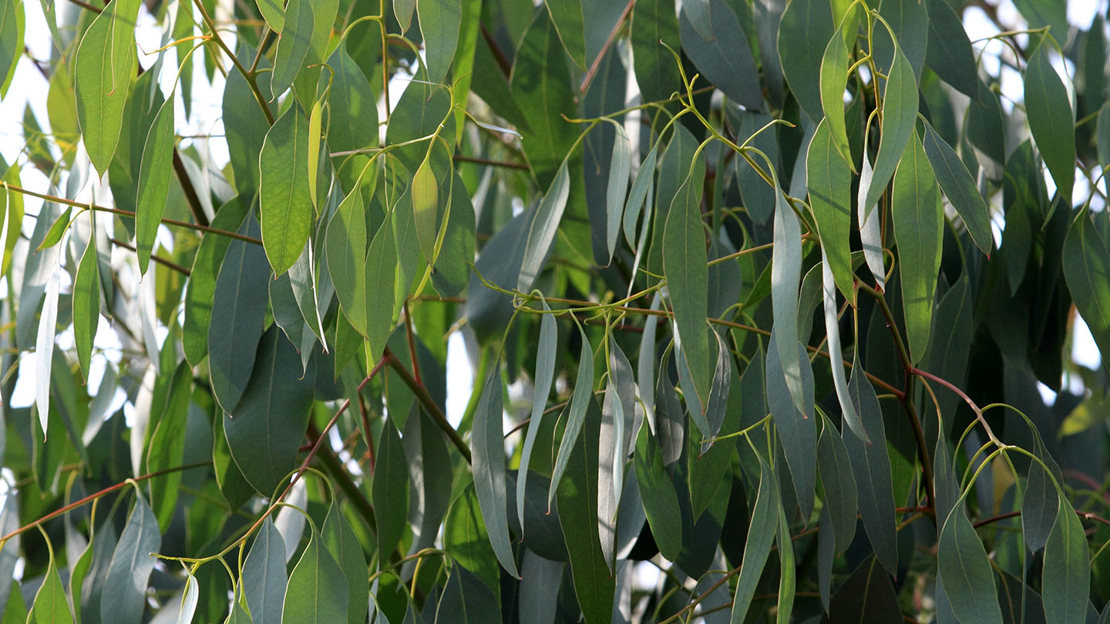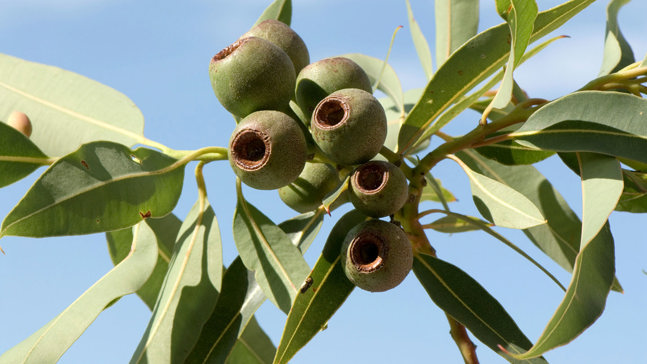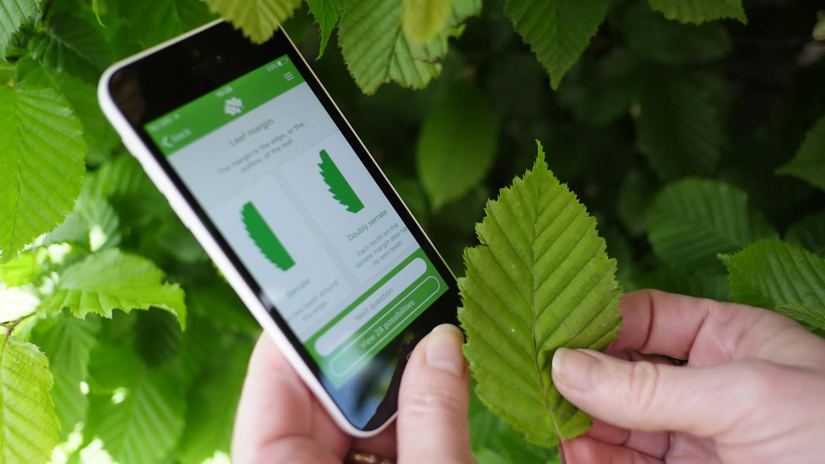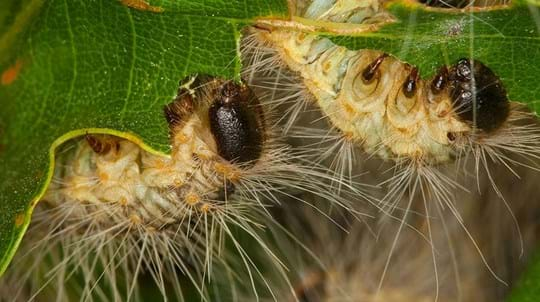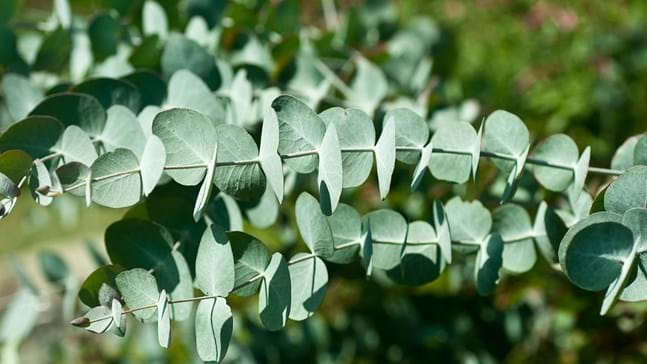
Credit: Organica / Alamy Stock Photo
Leaves
Best identified by the blue-green adult leaves that are long and slender and hang downwards from single stalks. Juvenile leaves on younger trees are blue, round and unstalked. Eucalyptus oil comes from the adult leaves which secrete the unmistakable scent when crushed.








